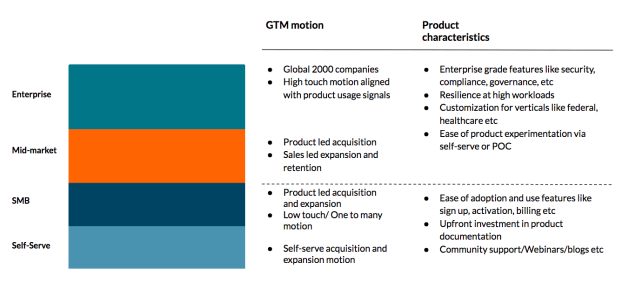Continuing our look at how to be successful in B2B product management, we speak to senior product people to learn what they love about product management in a business-to-business environment, how it differs from B2C, their biggest challenges, and any advice they have for other B2B product people. If you missed it, you can read Part 1 now.
In brief
- Despite similar pressures and challenges to B2C, B2B may feel more stable because you can develop a long-term relationship with users.
- The relationship between sales and product can be tricky a lot of B2B businesses are sales-led.
- You may find you’re more of a project manager than a product manager if the business is sales or founder-led.
- You may find you’re not expected to take a big-picture view of the product and market, but to react to the demands of customers and prospects.
- It can be difficult to avoid timeline roadmaps and there’s often a tension between short-term targets and what’s right for the long-term success of the product.
Business-to-enterprise problems
Jason Knight, Product Director at DueDil
Jason has been Product Director at DueDil for about a year. He also hosts the “One Knight in Product” podcast.
Jason describes DueDil as a regulatory technology player, working for banks, fintechs and other financial services businesses to provide company intelligence, pulling in data from a wide range of sources so that they can speed up their regulatory checks and speed up onboarding for their customers. He says: “Say you open a business account with a bank like Santander. In the old days, it would have meant doing paper look-ups and following paper trails, but our API and web products allow banks to speed that journey up.” DueDil recently merged with Artesian Solutions and Jason says the combined business is working hard on its combined value proposition and is bringing the products together thoughtfully.
Jason has spent a long time working in and commenting on B2B product management. He has always focused on bigger businesses: “In bigger ticket, business-to-enterprise [B2E] types of businesses there are some constant themes that are regularly played out,” he says.
It’s not a tech-driven startup
B2E businesses are commonly sales-led, he says, often formed by someone with industry experience who has an idea to serve a pain point in that industry. They then create a company to serve that industry, but won’t necessarily set it up as a tech company. “That's not wrong, but it means that some of the rules are different. They don’t attack problems in the same way as more tech-driven startup. They can be very sales, very founder-led, and can be very reactive to individual client or prospect demands,” Jason says, “and the product team’s job is not to define anything or to be strategic.”
Jason says he knows plenty of people who are happy doing this, they don't want to work on big picture strategies and they like just building products. But if you’re a product person who wants to make a big difference, and help to scale a company, and build a strategy, and that aspiration is blown up every time the CEO speaks to someone, then you’ll quickly become disheartened and unmotivated. He adds: “I always say that you should step back and look at the bigger market and at some of the things you could be doing, rather than just tackling what's in front of you. You’re going to struggle to make it big if you're always tackling those tactical issues.”

There’s also “a lot more love” for Gantt chart-style roadmaps in B2B businesses, Jason has found. “It's very tricky to sell the concept of a non-timeline plan to people who come from traditional business backgrounds,” he says. “They like Gantt charts and dates and milestones and deliverables.” Jason says he works to a timeline roadmap with the implicit understanding that no one will hold them to anything on the roadmap beyond the next few weeks. He adds that while DueDil is product led and generally flexible on dates, sometimes there can be a need to hit a deadline for a large client renewal. “The reality is, with big-ticket product sales, that there will always be times when you have to commit to a date. But I think that you must at least try to sell the concept that you will meet commitments when you have to, but ideally by exception, and everything else should be iterative and somewhat fuzzy.”
One of the attractions of B2B product management is that you can build long-lasting useful relationships with your customers. Says Jason: “Unlike mass-market B2C, there's a certain stability. You have longer, higher value contracts. You're not so much buffeted about by constant turnover and churn. In theory, this should give you a good bedrock to understand your users and make transformative change over time.But obviously, if you're very sales-led, then there's always that customer that wants the next thing. It’s the product team’s job to have a healthy, collaborative relationship with the sales team, and help to manage these conversations proactively."
He adds another caveat. If the business only has, say, 300 users, then they’ll quite probably get tired of talking to you. “You absolutely talk to users when you can, but when you can’t then you make sure you talk to the people who do – their account managers, the customer service team – you have to make sure you get as many inputs as you can. Product people shouldn’t be so precious about discovery, you have to make sure you get as many inputs as you can – it’s the product team’s job to synthesise that and use it to inform the strategy.”
Dealing with subject matter experts
While the cadence in B2B is usually different from B2C, it’s a mistake to think it’s less pressured, Jason says. Small companies are always chaotic, and there’s always pressure to get work done for big deals. He adds: “In B2E, am I able to do a quick A/B test, get the results tomorrow and make decisions on it? Absolutely not. Am I able to release a new feature and immediately see an uptick in sales? No, that could take weeks or months. You have to work more with proxy metrics, or get close to the salespeople who see early signals.”
Discovery can sometimes be a problem for B2B product managers, says Jason, and he has previous personal experience of this. There may be subject matter experts who are either founders or who give the business credibility and the company may feel they are the only discovery you need. Jason adds: “These people do know a lot. And you should absolutely keep them close to you and have discussions with them — but not just with them.”
“I think product people can forget that the core of the mission in B2B product management is the same: to build great products that solve real problems for enough users to be sustainable for your business. B2B people may forget this because they're made into project managers a lot of the time,” says Jason.
Market intelligence products
Steve Nuttall, Global Head of Product Development at Mintel
Steve has worked at market intelligence firm Mintel for 18 years, starting his life there as a software developer and taking up his current role nearly four years ago. He also has a side gig, a management training startup called Serve The Team.
Steve says he’s stayed at the same company for such a long time because his career has never stagnated and he’s been presented with new challenges and opportunities every few years: “Our job at Mintel is to work with our customers to help them make really good business decisions, to help them ultimately grow their businesses, sell more products and be more effective,” he says.
Founded in 1972, Mintel has a good reputation for the strength of its consumer research. Says Steve: “We commission a lot of consumer research, and then we have teams of experts and analysts who digest it and help people make sense of it and understand where the opportunities lie. But we also look at things like new product launches in the CPG [consumer packaged goods] industry globally, looking at a range of categories, whether it's food, drink, beauty or personal care.” Mintel’s clients are the players in these markets, so Mintel has a subscription business and also does one-off consulting and bespoke work.
Because of the improvements in access to data over the last few years, the company’s expertise and ability to clearly understand what its customers are looking for and help them find answers has become as important as the strength of its database, says Steve.
Like Jason, Steve says it’s harder to speak to customers than it would be in a B2C business. “We do talk to our customers, it's something we're very passionate about doing and we want to make sure we talk to them regularly. But we have a sales team who does that all the time, often from a slightly different perspective.” This can create some tension between product and sales, Steve says, which they try to resolve making it clear what the different teams bring to the conversation. For example, sales colleagues might sit in on customer meetings with product managers so that they can see there are different things to be learned. “The other critical thing we do is almost bypass the conversations and look at the data,” says Steve. “What do we see in terms of how customers use our products, what does that tell us, and how does it differ from the anecdotal evidence we get?"
There’s also tension between sales and product teams that comes from their differing motivations, and Steve says his team can come under pressure to build specific features that might not be the right thing to do for the long-term success of the product. “There’s a pressure between the short and the long term that we see playing out on an ongoing basis,” he says.
Development cycles are longer
Development cycles can end up being longer for a variety of reasons, Steve believes. You may want to be sure that at least some of the commercial team has bought into an idea before you test something new, for example. But it may also be difficult to get enough feedback quickly so you can make a decision, just because your B2B product isn’t used by your customers every day.
Keeping the commercial team on board is an important element of success in B2B product management, he feels, but you should resist any attempts to turn Product into a feature factory that builds the next thing a client wants. “You won’t end up with a compelling product if you do this, so you need to have strategies to manage those conversations,” he says.
He also suggests that product managers use their roadmaps as a negotiating tool here: “If you’re under pressure to build something for a particular client you can go back to the roadmap. Point out you can't put something new on it without taking something else off.”
In summary
While no two B2B businesses are the same, there are some common themes. They tend to have fewer customers than a B2C business, and to be more sales-led and reactive to the needs of their biggest customers. That said, customers are more invested in the business’s and product’s success than someone using a consumer product.
Development cycles are likely to be longer, and it’s probably harder to get timely feedback.
Discovery can also be harder, as subject-matter experts within the business may feel they can provide all the discovery the product team needs to do.
The sales team probably speaks to customers and prospects all the time and may not welcome or understand why a product person wants to do the same. So a good relationship with sales and customer service is vital to success as a B2B product person. You may find you need to push back against becoming a feature factory for the sales and management teams, using the product roadmap to demonstrate what’s right for the long-term viability and success of the product.
More B2B insights
You'll find more B2B content to explore on the Mind the Product site and perhaps, like Lori, Jason, and Steve in this series, you have insights you'd like to share too. We're always looking for product pros to feature in our content — let us know if you'd like to be one of them!







